Seeing as historians can barely agree on a definition of what it means to be Germanic, it’s no surprise everyone else struggles to define it as well. I’ve come across questions on whether or not there is a link between Vikings and the Germanic people quite often, so I wanted to explain exactly how they are linked (because they definitely are and in an interesting way as well).
First off, the generally accepted definition of what and who qualifies as Germanic is tied to archaeological (weapons, tools, artifacts) and linguistical (runic script, modern languages) proof, and not that much with the borders of modern-day Germany or even the Germania of Roman times.
I’ve plowed through many books and academic publications to answer the questions below, and in order to stay accurate and unbiased throughout. I’ve also created detailed and illustrated maps to more easily explain the link between Scandinavians, Vikings, and the Germanic people.
So, Were the Vikings Germanic?
The Norse people living in Scandinavia during the Viking Age (including the seafaring raiders we call Vikings today) were a North Germanic people speaking a North Germanic language, directly descending from the Nordic Bronze Age culture which is seen by historians as the ancestral culture of all Germanic people.
What most historians agree on is that the Germanic tribes were groups of people living in central and northern Europe during the Iron Age, sharing a common language group that is the root of all Germanic languages (which today includes over 515 million native speakers of languages like English, German, Dutch, and the Nordic languages to name a few).
What you may not know is that the Germanic people are all thought to have originated from a fairly small area in southern Scandinavia and northern Germany around the 4th century BCE, from where they set out on the Great Migrations around all of Europe and parts of Asia.
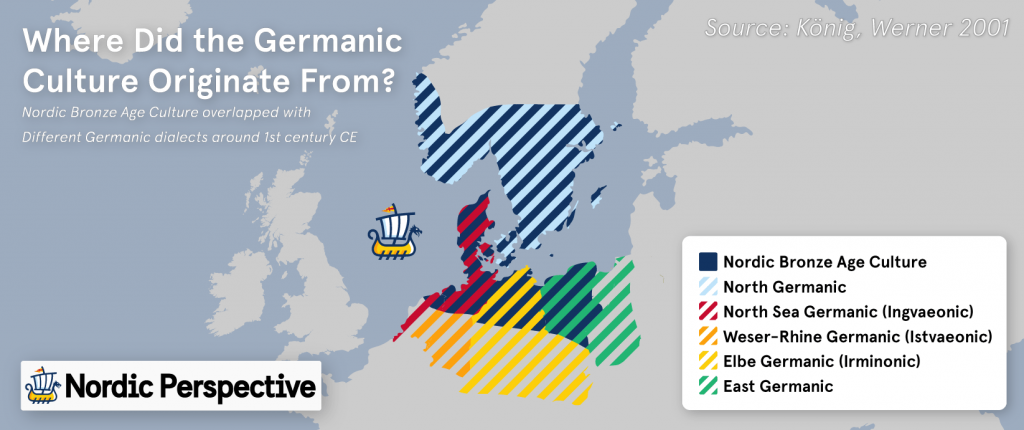
These migrations coincided with—and definitely contributed to—the fall of the Roman empire around the 6th century CE, some 200 years before the Vikings started their European raids and expansions from Scandinavia.
So the Vikings were Germanic and spoke a Germanic language (Old Norse), but that doesn’t necessarily mean that they were culturally connected to all other Germanic groupings at the time. After all, they started raiding many of them and were considered barbaric heathens by most of them with little regard for any shared ancestry.
Which Germanic Tribes Originated From the Nordic Bronze Age?
Here’s a map and list of the most well-known Germanic tribes all thought to originate from the Nordic Bronze Age culture that was dominant in Scandinavia and Northern Germany. I’ve included the area(s) they’re most associated with, as well as a brief summary of their history in the table below the map.
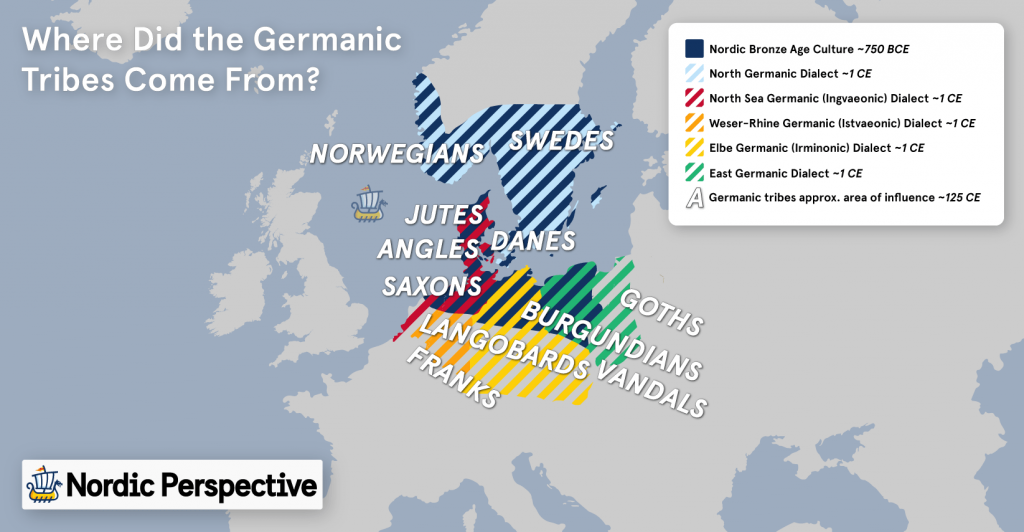
The Germanic tribes had a huge impact on European history, forging multiple influential kingdoms and even empires that ruled the continent for hundreds and hundreds of years in the ashes of the Roman Empire.
These kingdoms became predecessors to the modern-day countries of England, France, Germany, Italy, Spain, the Netherlands, Sweden, Denmark, Norway, Iceland, and the Faroe Islands (to name a few).
I made a map showing the extent of the Germanic Tribes and Kingdoms at the fall of the Roman Empire around 476 CE:
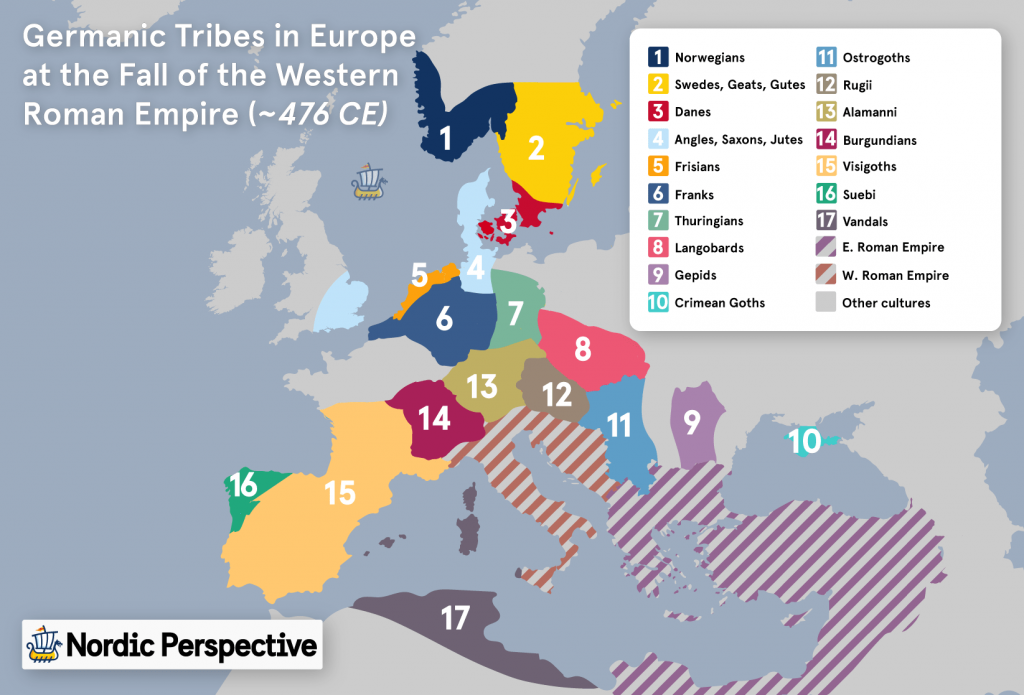
Are Scandinavians (Swedes, Danes, Norwegian) Germanic?
Scandinavians are considered a North Germanic people, and all the Scandinavian languages (Swedish, Danish, Norwegian) are in the North Germanic language group (what is also referred to as the Nordic languages when including Icelandic and Faroese also).
The link between Scandinavians and their Germanic ancestry goes back to the bronze age Scandinavians (the Nordic Bronze Age culture), who eventually became forefathers to all Germanic people as their rich, individualistic, and warrior-focused culture spread south into northern Germany.
The Nordic Bronze Age people are thought to have been extensive traders of amber and various metals with the rest of Europe, through which they developed an unusual expertise in metalworking as well as seafaring.
The amount of metal deposit findings from that period indicates that the Nordic Bronze Age culture was among the richest in Europe, and also reveals a strong focus on weapons, armor, and warfare in general.
So if all Germanic tribes came from Scandinavia, why are they called Germanic?
As the Nordic Bronze Age culture spread south into northern Germany and came in contact with Celtic tribes and eventually the Roman Empire, it became known as Germanic to the (mostly Roman) historians at the time, which is why we today also refer to it that way.
I wrote an article that explains the differences between what the terms Nordic and Scandinavian mean and represent, so if you’re curious to find out what the differences are go check that out!
Does This Mean Germany is Scandinavian?
Germany is not considered part of the Scandinavian geopolitical region, despite Germans and Scandinavians sharing a Germanic ancestry that goes back to the Nordic Bronze Age Culture and beyond.
In fact, the link between Germans and Scandinavians stretches even further back to the Corded Ware and Funnelbeaker cultures during the copper age, both dominant and covering a similar area in Northern Germany and Southern Scandinavia.
When comparing modern and ancient DNA-findings from Germany and Scandinavia, scientists found a strong correlation to a specific gene group in regions where Germanic tribes migrated to and settled in. They found that Scandinavians have the highest occurrence of this gene group, where its visible in at least 35% of the population, compared to around 15% in Germany.
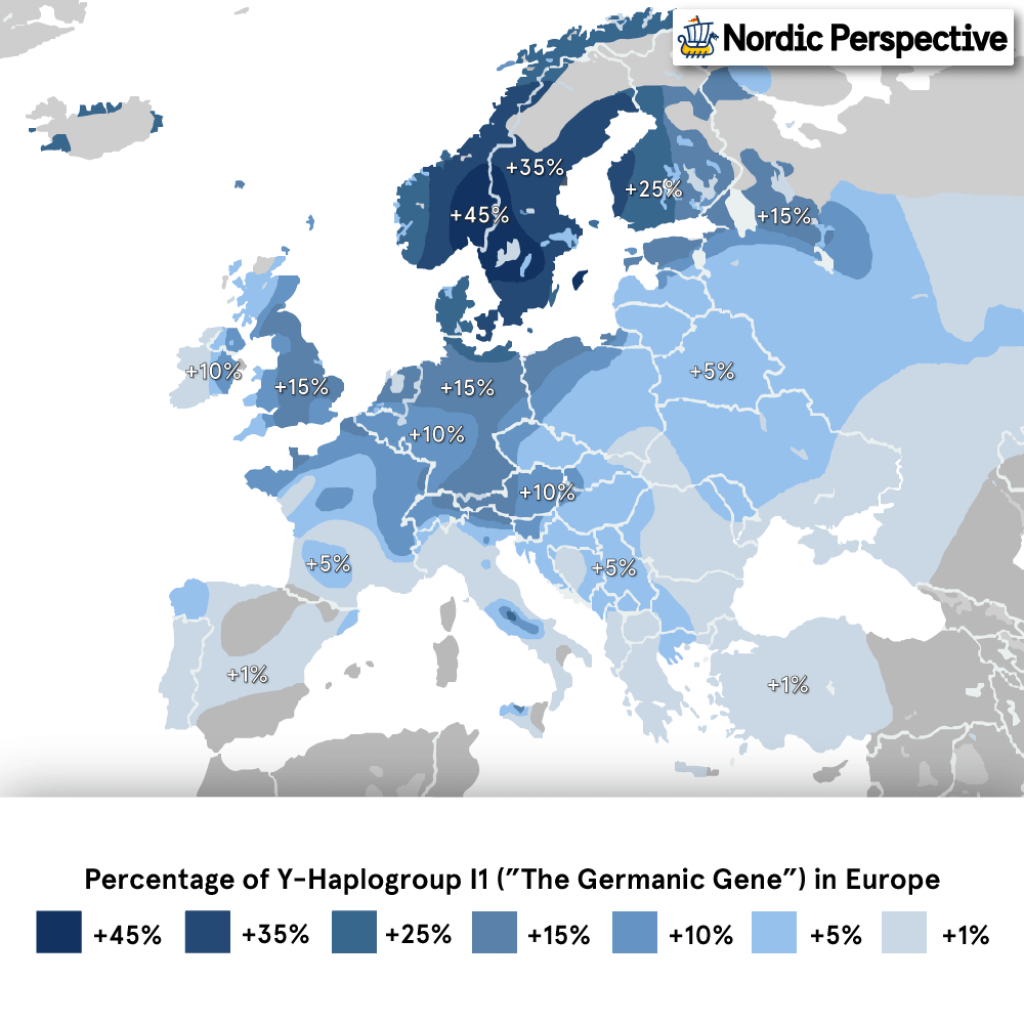
Are Germans Vikings?
The Norse sea-faring raiders we today call Vikings did not come from Germany, but rather its Northern European neighbors in Scandinavia; Denmark, Sweden, and Norway. Vikings did settle within the borders of modern-day Northern Germany, with Hedeby and Sliasthorp likely being the most influential ones.
Vikings in Germany
Vikings settled in and raided many places in what is today called Germany, mainly along the Rhein river, the North Sea coast, and the Scandinavian borderlands. These raiders and settlers also ended up in modern-day Netherlands, with a lot of Viking influence in Noord-Holland and Frisia (based on archeological findings).
Known Viking settlements in Germany & the Netherlands
The Viking Age inhabitants of (modern-day) Germany were part of the Frankish Empire, and more specifically East Francia, which historians see as the predecessor of modern-day Germany.
The early Frankish Kingdom was founded by the Merovingian Kings and greatly expanded and turned into an Empire that covered most of Western Europe by legendary Frankish emperor Charlemagne / Karl den Store / Charles the Great.
The Frankish Empire as a whole was raided by primarily Danish Vikings starting around 800 CE after the Franks had defeated the Saxons (who, like the Norse Vikings, followed a Germanic Pagan religion).
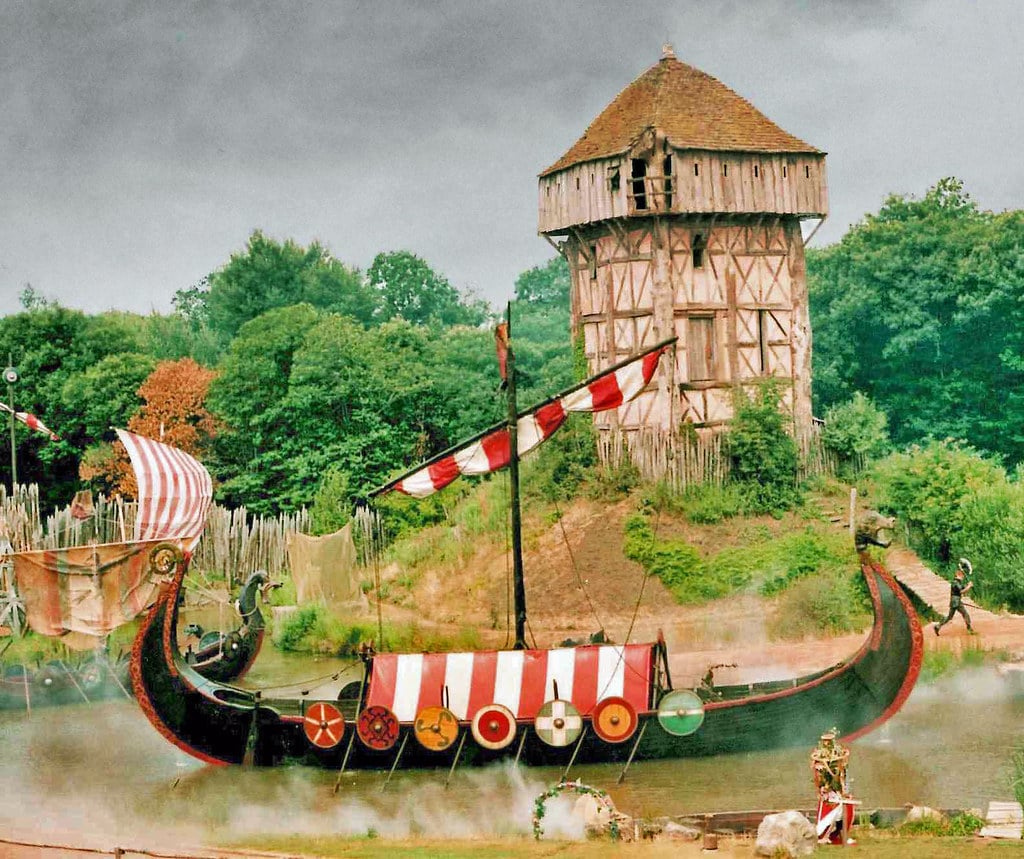
“Vikings” by It’s No Game is marked with CC BY 2.0.
Charlemagne wasn’t successful against the Danes, who were led by King Godffrid, and huge sums of money had to be paid to keep the Vikings at bay and avoid full-on invasions.
From 860 CE and onwards the Vikings changed tactics and started settling in Northern Germany instead of retreating after each raid, building forts and settlements near the Danish border that were used as outposts from which future raids originated.
The Vikings kept raiding and the only effective way of making them disappear seems to have been paying them off, which the Franks did a lot in the form of what is sometimes called Danegeld, “the Danish tax”.
The Franks attempted to stop the raids by giving the province of Frisia as a fiefdom to the Viking King Sigfrid in 882 CE, much like they did with Normandy in 911 to the Viking Rollo Ragnvaldsson. This actually attracted even more Vikings searching for similar “payoffs” initially, but after repelling the raids and eventually setting up payment schemes to the Vikings the raids finally ended around 884 CE.
By the way, if you're looking for some historically accurate viking apparel and wall art, I've designed a large collection of Norse wall art and apparel based on and inspired by actual archeological finds from Viking Age Scandinavia.
Sources:
https://www.jstor.org/stable/45020171
 Nordic vs. Germanic vs. Celtic: Differences & Links Explained (+ Maps)
Nordic vs. Germanic vs. Celtic: Differences & Links Explained (+ Maps)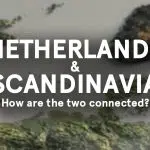 How the Dutch & Scandinavians Are Connected (Complete Guide)
How the Dutch & Scandinavians Are Connected (Complete Guide)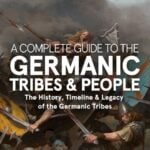 The Germanic Tribes: History, Migrations, Timeline & Legacy
The Germanic Tribes: History, Migrations, Timeline & Legacy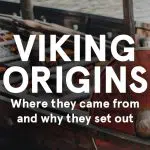 Viking Origins, Ancestry & Why They Set Out on Adventure
Viking Origins, Ancestry & Why They Set Out on Adventure

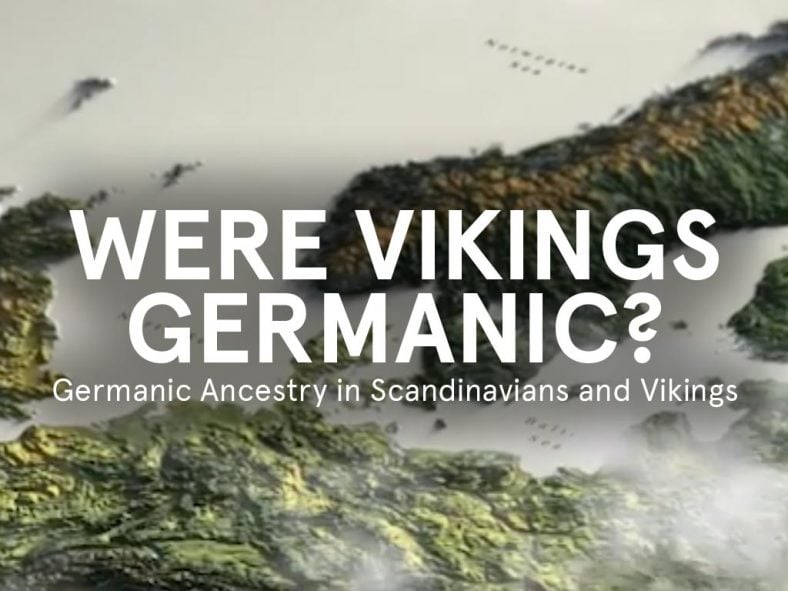
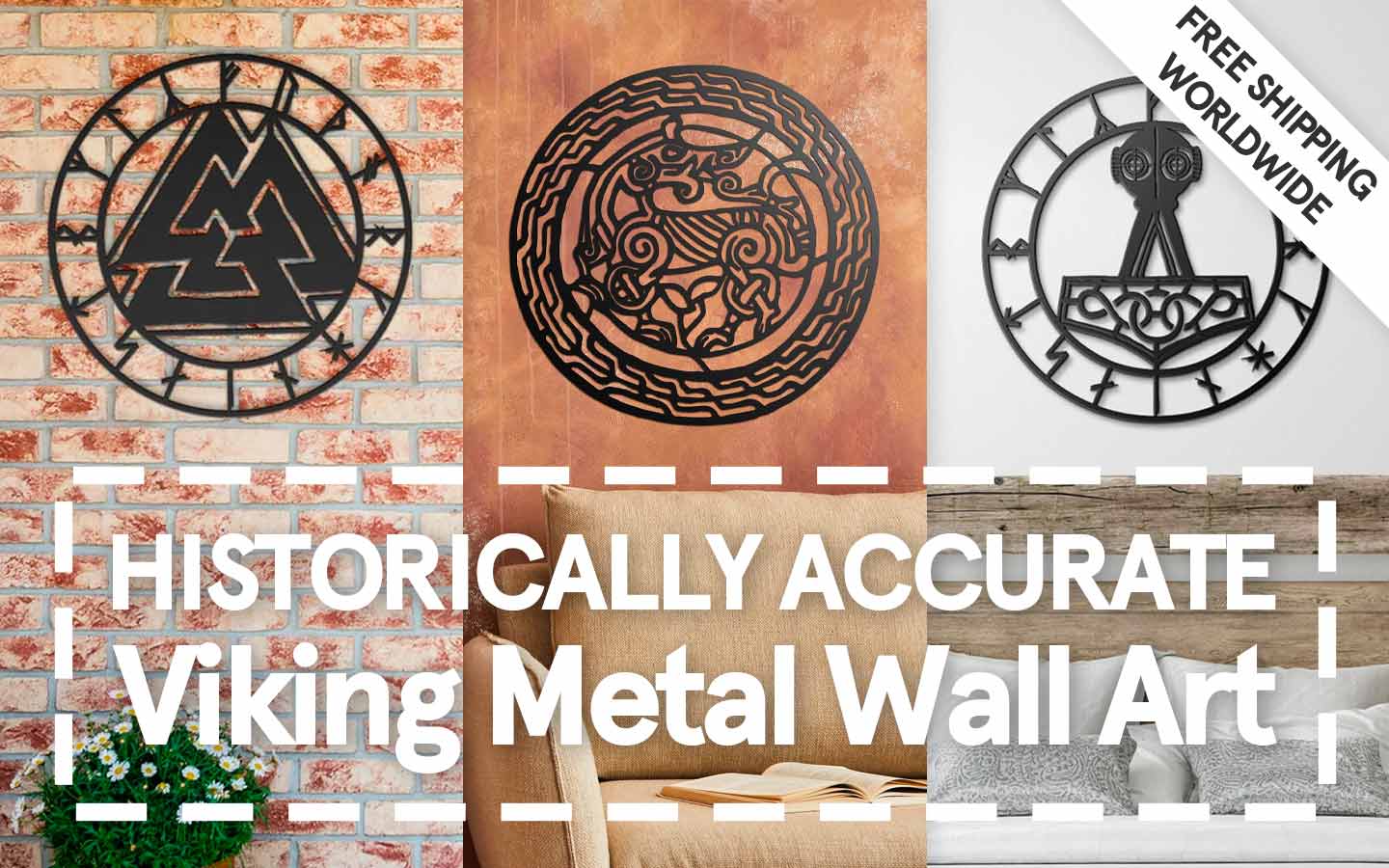

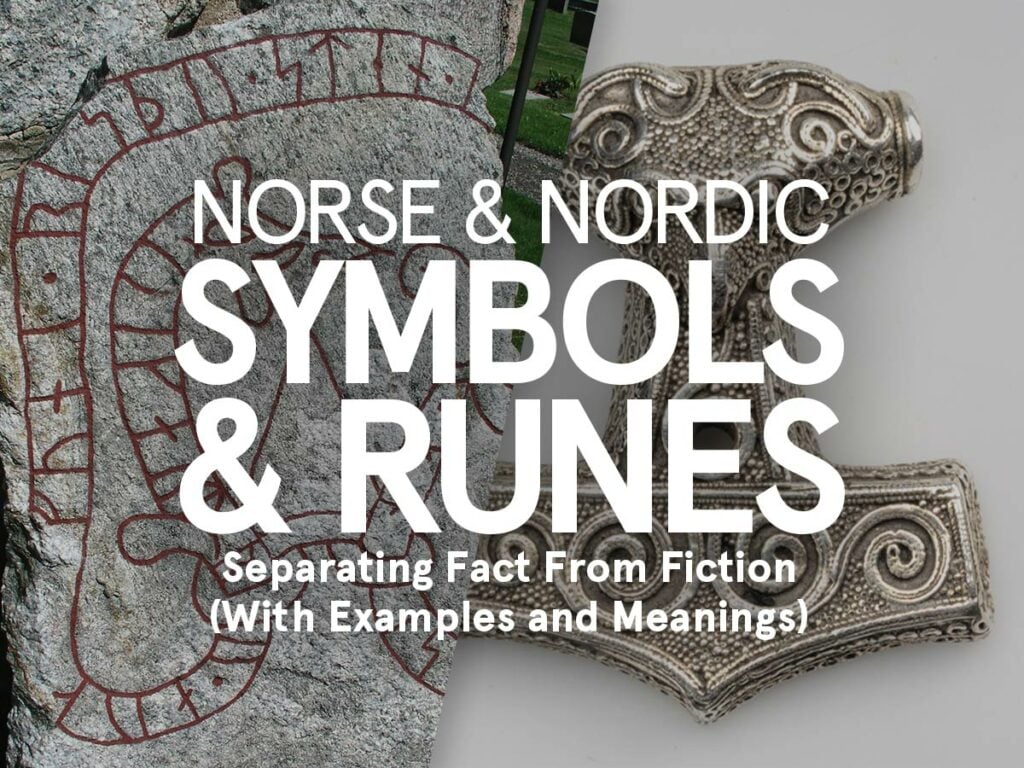

Please define your use of “Greenlandic”. Are you talking about the language of the Inuits? The language spoken by the Icelandic settlers of the late 10th century? If it’s the former, then it is definitely not of Germanic decent.
Hi Mark!
In this context, Greendlandic was listed as a language that is spoken in the Nordic region, not a Germanic language specifically. I have clarified this in the article to avoid further confusion, so thanks for pointing it out!
Might it be more accurate to ask were the Germanic tribes Scandinavians?
Your research and narration are quite impressive, especially with respect to dividing the presentation by using questions.
Indeed it would! I suppose you could even take it one step further and ask; did the Bronze age Scandinavians come from Germany? Which of course some of them did, as Central Europe is one of several places early Scandinavian migrants came from (along with the Russian steppes, Anatolia, Syria, and likely many more).
I’ve gone more into detail about the Scandinavian/Germanic roots here if you’re interested: https://nordicperspective.com/history/vikings/viking-origin-story#who-did-the-vikings-descend-from
In regards to the Germanic migrations, I have no problem relating to a strong urge to migrate away from the cold, dark, and inhospitable reality that life in Scandinavia can be (even with today’s modern comforts!). 😉
Anyway, thanks for your comment Tony. I’m glad you enjoyed the article!
Seeing my DNA with matches from Covesea Caves, Scotland of late Bronze Age, Bronze age Orkney and later DNA mainly being of Norwegian, Danish and Swedish – maybe we can look a little further west during the bronze age?
It’s also possible some of your ancestors (with Scottish bronze age DNA) were “invited” over from Scotland to Scandinavia during the Viking age, as it seems to have been quite common to bring back Scottish and Irish thralls from raids.
We can find one such example in Erik the Red’s Saga:
“When Leif was with King Olaf Tryggvason and he asked him to preach Christianity in Greenland, the king had given him two Scotsmen. The man was called Hake and the woman Hekja. The king had told Leif to use these two if he needed someone who was fast, because they were faster than animals. Leif and Erik let these two go with Thorfinn Karlsämne.”
– Erik the Red’s Saga, Chapter 8
Either way, it’s fascinating stuff trying to make sense of the ways humans have moved around throughout history!
Vandals did not become the Visigoths and Ostrogoths. Visigoths and Ostrogoths are simply Goths living in the West and East. They existed alongside the Vandals as something distinctly different.
The Vandals conquered Roman Carthage and were in turn conquered by the Byzantines in 553 and ceased to exist as a distinct group after that. The Visigoths in particular continued to rule in Spanish Iberia until they were conquered by Arabs in 711.
Thanks John, you are of course correct.
This mixup stems from me trying to update an earlier version of the article with tables that look better on mobile, and in the process I accidentally deleted the Goths, Visigoths, and Ostrogoths while erroneously including the Goths description under the Vandals. I’ve now once again included the correct Vandals description as well as the Goths, Visigoths, and Ostrogoths.
Thanks again for pointing this out, and my apologies for any confusion.
After reading, watching the different shows of vikings which is one or more people’s perception. To my uncle doing a trace back as far as he gotten. That my dad’s side was once a royalty of King Arthur, the knights of the round table. A noble knight. Though knowing the crossovers in our history in families. We are basically mutts. The crossover bloodlines so many times. The vikings big on not just raiding but creating offsprings of mixture relationships from England across to Russia through Europe. So much more studies and research is a must till complete understanding by anyone to see the bigger picture.
My mother’s parents came to the U.S. from Finland in 1902 & 1909. My father came here from Germany in 1930. I did Ancestry DNA & got the following results: My mother’s half of my DNA shows 47% Finland, 2% Sweden & Denmark, and 1% Norway. I was surprised by my father’s half of my DNA. It showed 26% Sweden & Denmark, 15% Germanic Europe, 5% Norway, and 4% England & Northwest Europe. After reading your article, I understand a little more clearly how this came to be
Hi Bob,
I’m happy to hear that you gained some insight into your family history! I hope you get a chance to connect with your roots by visiting the region at some point as well.
I never loved History at school but movies like Troy & series like Vikings fascinate me.
Now I understand where the mannerism of people from Germany, England & France stem from. They have this innate will to explore & colonize people from other regions due to economic reasons or maybe just fate.
Reader from Cape Town, South Africa.
Troy, Vikings, and series and movies in general have definitely inspired me to learn more about history too! I have learned though that some are definitely less accurate than others and focus more on the entertainment aspect, but as long as you dig a bit deeper and learn more from a reliable source it’s all good in the end.
I’m glad you’ve learned some more about the history of the Germanic people — it’s always interesting to analyze phenomenons such as exploration and colonization from a historical perspective, which have both definitely been a big part of the Germanic people’s past and present.
I’d recommend diving into shows like The Last Kingdom and Barbarians as well for even more historic entertainment that is more or less historically accurate.
–Karl
Bookmarked, so I can continuously check on new posts! If you need some details about Search Engine Optimization, you might want to take a look at Webemail24 Keep on posting!
I am afraid I have to correct you on one point. There was no tribe called Franks. It was a federation of tribes that travelled together. The Romans did not call them Franks. They referred to them by their individual tribal names. The three largest tribes were the Salians, Ripuarians and the Chatti. There were other smaller tribes, but these three are the ones that went down in history.
The Salians settled in what is now Belgium, but they ultimately drove the Romans out and ruled all of what is now France. The Ripuarians settled in Roman Colonia, which is now Köln (Cologne). The Chatti settled in Hessen. Merovich became King of the Sallians and founded the Merovingian dynasty which lasted until Karl der Große (Charlemagne) took it over. No one knows his origin, but he was probably a Ripuarian. His father Pepin was what Germans today would call Chancellor, to the last Merovingian king.
When the pope was depose, Karl der Große rescued and put him back on his throne. As a reward in 800 he was crowned Roman Emperor. In 1558 Emperor Karl V (Charles V) changed the title to Holy Roman Emperor, so it is a mistake to call Charlemagne Holy Roman Emperor. The French called Karl der Große Charlemagne their great king. But he was German, born in Aachen, Germany, where his main headquarters was, and all of his many palaces were in Germany.
There are only three primary source on the Franks. The most well-known is by Bishop Gregory of tours, a Gallo-Roman who lived under a Merovingian king and was in constant conflict with the king and especially the queen over religious matters.
The second is attributed to Fredegar, a Germanic Burundian monk. The Merovingians had subjugated the Burundians, and most other Germanic tribes except the pagan Saxons. Karl der Große spent his entire life trying to defeat the Saxons and force their conversion. He finally captured King Widukind, forced his baptism, with himself as godfather, them imprisoned him, but the Saxons continued to fight.
The author of the last primary source is the only one who was a Frank. The manuscript was found in Paris and the author is unknown. He lived under the last Merovingian king and began his book by calling him our glorious Merovingian king. His Latin was perfect, which was unusual at the time when Latin was corrupted, by the Celtic and Germanic languages, and is called bastard Latin. Even Bishop Gregory apologized in his book for the poor quality of his Latin.
But this author, unlike the other two, was not a cleric. There is not one word in the manuscript about religion, as in the other two. This was at a time when the kings and most nobles cold not write at all. As late as 1066 William the conqueror King of England, his wife and a bisop all signed a document with a X. Everything else about the Franks Is an interpretation of these three primary sources, or an interpretation of a later interpretations.
This went off before I was finished, by mistake. Please delete the earlier one, which was not even proof read.
I am afraid I have to correct you on one point. There was no tribe called Franks. It was a federation of tribes that travelled together. The Romans did not call them Franks. They referred to them by their individual tribal names. The three largest tribes were the Salians, Ripuarians and the Chatti. There were other smaller tribes, but these three are the ones that went down in history.
The Salians settled in what is now Belgium, but they ultimately drove the Romans out and ruled all of what is now France. The Ripuarians settled in Roman Colonia, which is now Köln (Cologne). The Chatti settled in Hessen. Merovich became King of the Sallians and founded the Merovingian dynasty which lasted until Karl der Große (Charlemagne) took it over. No one knows his origin, but he was probably a Ripuarian. His father Pepin was what Germans today would call Chancellor, to the last Merovingian king.
When the pope was depose, Karl der Große rescued and put him back on his throne. As a reward in 800 he was crowned Roman Emperor. In 1558 Emperor Karl V (Charles V) changed the title to Holy Roman Emperor, so it is a mistake to call Charlemagne Holy Roman Emperor. The French called Karl der Große Charlemagne their great king. But he was German, born in Aachen, Germany, where his main headquarters was, and all of his many palaces were in Germany.
There are only three primary source on the Franks. The most well-known is by Bishop Gregory of tours, a Gallo-Roman who lived under a Merovingian king and was in constant conflict with the king and especially the queen over religious matters.
The second is attributed to Fredegar, a Germanic Burundian monk. The Merovingians had subjugated the Burundians, and most other Germanic tribes except the pagan Saxons. Karl der Große spent his entire life trying to defeat the Saxons and force their conversion. He finally captured King Widukind, forced his baptism, with himself as godfather, them imprisoned him, but the Saxons continued to fight.
The author of the last primary source is the only one who was a Frank. The manuscript was found in Paris and the author is unknown. He lived under the last Merovingian king and began his book by calling him our glorious Merovingian king. His Latin was perfect, which was unusual at the time when Latin was corrupted, by the Celtic and Germanic languages, and is called bastard Latin. Even Bishop Gregory apologized in his book for the poor quality of his Latin.
But this author, unlike the other two, was not a cleric. There is not one word in the manuscript about religion, as in the other two. This was at a time when the kings and most nobles cold not write at all. As late as 1066 William the conqueror King of England, his wife and a bisop all signed a document with a X. Everything else about the Franks Is an interpretation of these three primary sources, or an interpretation of a later interpretations.